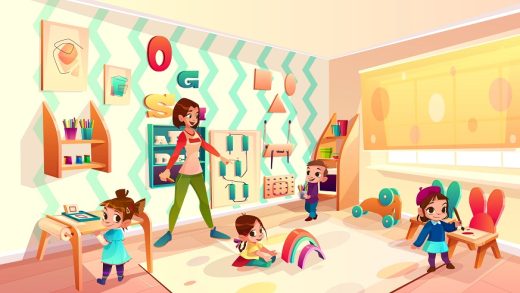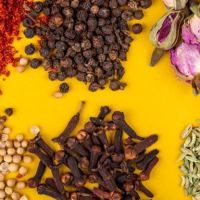Good nutrition is a lifelong gift to your children. It can support and nourish them along a path of wonder and possibility. When it comes to kids, their nutritional needs can be pretty complicated. As every child is unique, their needs keep changing as they grow. That’s why it becomes important for parents to have more than just a basic understanding of nutrition. They need to know how to spot potential problems in a child’s diet. And they need to be able to create nutrition plans that are just right for each individual child. A toddler food chart can be a helpful tool in this process.
In this blog, we will explore the key components of balanced meals for toddlers and provide you with practical tips to create a healthy eating plan for your child.
How Does a Balanced Toddler Food Chart Look Like?
Let’s explore what a balanced toddler food chart contains. However, note that this is not the ultimate list. Consult with a nutritionist if you see any eating disorders in your kids.
- Fruits
- Vegetables
- Whole grains
- Dairy products
- Meat, Poultry and fish
- Legumes and Nuts
Fruits are important as they have vitamins, minerals, and other nutrients. These can boost your child’s immune system, digestion, and health.
These include apples, bananas, berries, oranges, melons, peaches, and pears. Depending on his or her age and activity level, a toddler should eat 1-1.5 cups of fruits in a day.
A serving equals 1/2 cup raw or canned fruit (in juice, not syrup) or frozen fruit.
Vegetables are nutrient-dense. They have lots of vitamins, minerals, and antioxidants. Your child needs these to grow well. For example, broccoli, carrots, spinach, sweet potatoes, peas, green beans, and squash.
Generally, you may offer about 250 ml (8 oz.) of vegetables per day for a two-year-old.
Due to their high fibre content, these foods are essential for energy production and digestion. Whole-grain bread, brown rice, and oatmeal are good examples.
Three servings could be two slices of bread and mashed potatoes or a small bowl of quinoa and cheese and half a cup of cooked pasta.
These foods are like chunks or strips that will fit into the palm of your hand. A serving could also be a medium ear of corn or a small baked potato. It could also be milk, yoghurt, custard, pudding, evaporated milk, or non-fat dry milk powder.
Dairy products are rich in calcium, protein, and vitamin D, which are key to strong teeth and bones.
Some examples include milk, yoghurt, cheese, and calcium-fortified plant-based milk alternatives. Toddlers need 2- 2.5 cups of dairy a day. A serving can consist of half a cup of milk or yogurt or half an ounce of cheese.
These protein-rich foods are vital in your kid’s diet. They help grow muscles and repair tissues. They also provide iron, which supports healthy blood. Healthy blood is good for brain development. Chicken, Turkey (poultry), Fish (such as Salmon or Cod) Lean beef and Pork are good sources of protein as well. A serving, according to the toddler nutrition chart, may be one ounce of cooked meat, poultry, or fish.
Legumes and nuts serve to provide plant-based protein fibre, healthy fats, vitamins and minerals, etc.
For instance, beans, lentils, chickpeas, peanut butter, almond butter, and tofu are great options. You may aim for ¼ cup of cooked beans/legumes or 1 tablespoon of nut butter daily.
How Do You Know If Your Child is Eating Enough?
It is normal to be anxious as a parent about whether your child is eating enough. Although each child’s nutritional needs may differ, there are several signs that will help you know if your little one is eating well.
The first thing you need to do is monitor the growth and development of your child. Consistent measurements of your baby’s weight and height by doctors will show their proper growth. When they follow their own growth curve consistently, this implies getting enough food as outlined in the toddler nutrition chart.
You can also measure how much your child eats through his or her energy levels and mood. Generally, a well-nourished kid is active, playful and keen on everything happening around them, while when his or her child becomes lethargic, irritable or always hungry, then he should understand that it is high time to feed him more diets.
Another aspect that should not be overlooked is trusting the signals of fullness and hunger of children themselves. Children have inherent mechanisms for self-regulation of food intake. Provide them with a variety of healthy foods at regular mealtimes alongside snacks and let them eat until they are satisfied. Avoid pushing them to eat less or more than they want. It creates unhealthy eating habits. Too often, parents try to impose their own diet preferences on their children. They do this without considering the kids’ wishes and bodies. This leads to more life difficulties from diet issues.
A toddler nutrition chart can help you personalise balanced meals for toddlers. By including a variety of nourishing, wholesome foods from each group—like fruits, veggies, grains, dairy, lean meats, and nuts—in your child’s meals, you can give them all the vitamins and minerals they need to thrive.
Children’s growth and development, as well as their overall wellness, necessitate provision of a balanced diet. A healthy diet for kids is crucial for their optimal development.
It should be noted that each kid’s appetite may fluctuate occasionally. Just respond to your toddler’s cues for hunger and satiety by ensuring a positive eating environment which promotes good habits. Think about serving a plate with lots of colour variety when feeding them while making sure mealtimes are interactive and enjoyable; this way, you get to set the pace through what you eat, too.
Invest in your child’s future with Kangaroo Kids International Preschool. Our focus on engaging learning experiences will lay the foundation for your toddler’s lifelong success. Contact us to enrol your kids today!









